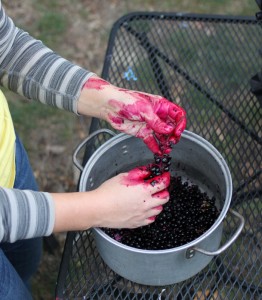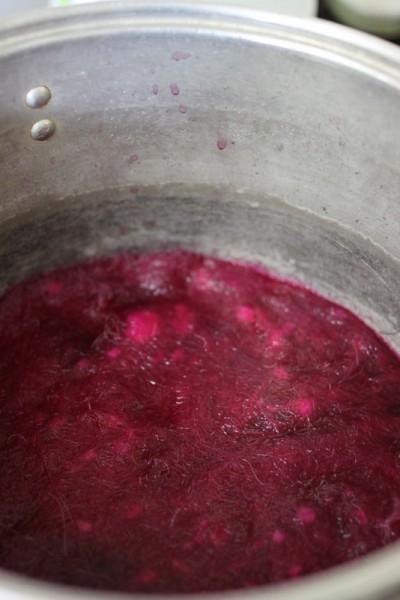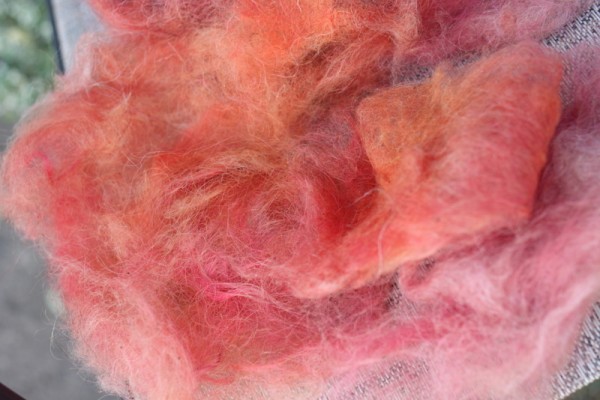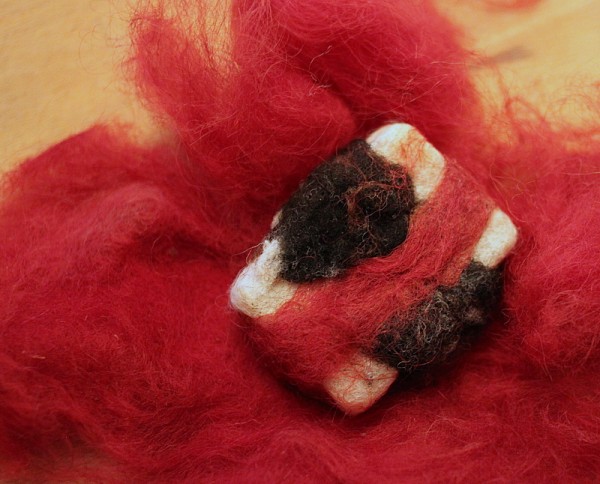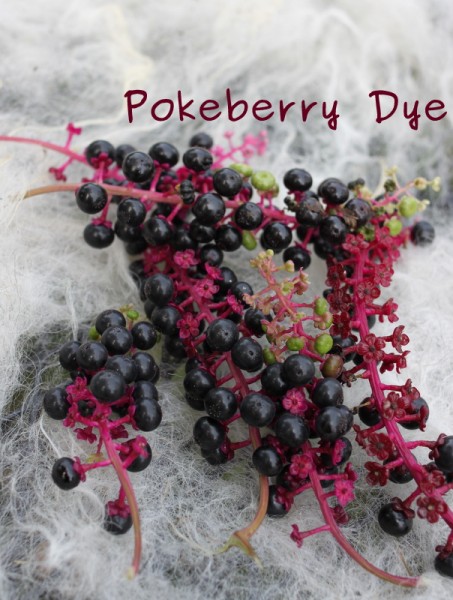 When I wanted a natural dye for the Homestead Studio: Wool class, I turned to the library and discovered Harvesting Color by Rebecca Burgess. The book, arranged by seasons, is a field guide for making homemade dyes from plants with descriptions of plants, their native locations, and how to make them into dye. Each step is illustrated with clear, engaging photographs.
When I wanted a natural dye for the Homestead Studio: Wool class, I turned to the library and discovered Harvesting Color by Rebecca Burgess. The book, arranged by seasons, is a field guide for making homemade dyes from plants with descriptions of plants, their native locations, and how to make them into dye. Each step is illustrated with clear, engaging photographs.
Autumn features a bright red wool dyed by pokeberry, also called pokeweed, pokeroot, and just plain poke. This weed litters our alleys, some plants reaching upwards of seven feet tall.


I cooked the juice, skins, and seeds with some water and vinegar (1/2 cup per gallon) for an hour, being careful not to boil per the book's directions. Then I let the mix cool and steep overnight. I strained out the seeds and added washed, carded Navajo-Churro wool from Cota Farms. I cooked the wool in the same way as the dye. After it cooled and steeped, I rinsed the wool in several pots of fresh water. Throughout the process I was careful not to agitate the wool so it stayed fluffy instead of felted.
The resulting wool is the color of a sunrise with tangerine and pinks. I repeated the process for a second batch, one which ended up a more evenly dyed crimson red. We used some of the colored wool to felt soap at the Homestead Studio. You can see Lil's bar with natural white, natural black, and pokeberry-dyed crimson wool.
The pokeberry wool project represents so much of what I love about my crazy homesteading life. I took a local, seasonal item, played around with lots of time and some effort, and created something beautiful and useful. By taking an idea out of a book, I learned more than words could teach me.
This type of learning always leads to more questions. I wonder if the dye might work on cotton or silk. And why did one batch turn out so much more intensely colored than the other? Can I grow indigo and make blue dye next year? Maybe I will play with weeds again and find out.
Have you ever made natural dye?

